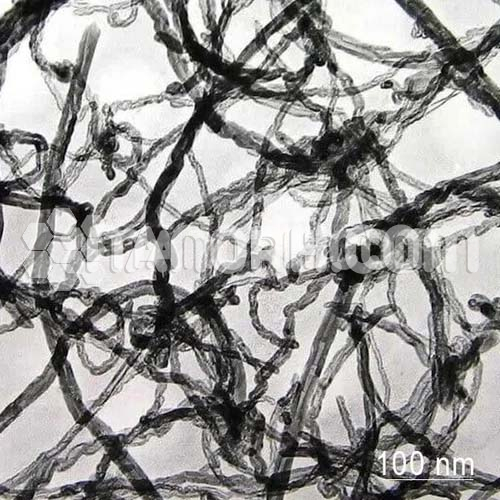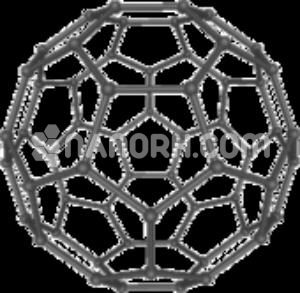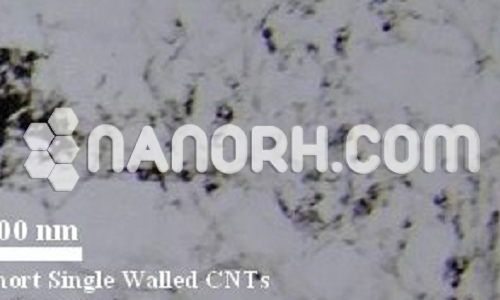| Short SWCNTs, Purity >60% | |
| Product No | NRE-32010 |
| CAS No | 308068-56-6 |
| Purity | Carbon nanotubes > 60 wt% |
| Average Diameter | 1.1 nm |
| Average Length | 1-3 um |
| Specific Surface Area(SSA) | 320m2/g(BET) |
| Tap Density | 0.48g/cm3 |
| True Density | 2.1g/cm3 |
| Electric Conductivity | > 100 S/cm |
| Thermal Conductivity | 50-200 W/m.K |
| Ignited temperature | NA |
Short SWCNTs
Introduction:
Short single-walled carbon nanotubes (SWCNTs) with a purity greater than 60% are nanostructures characterized by their cylindrical shape, consisting of a single layer of carbon atoms arranged in a hexagonal lattice. These SWCNTs are shorter in length compared to their longer counterparts, which influences their properties and applications. While a purity level of over 60% indicates some presence of impurities, they still retain significant potential for various applications. Their unique physical and chemical characteristics make them valuable in fields ranging from materials science to electronics.
Applications
Composite Materials:
Enhanced Performance: Even with a purity above 60%, these short SWCNTs can significantly improve the mechanical strength, electrical conductivity, and thermal properties of polymers and other materials. They are often used in automotive and aerospace composites.
Energy Storage:
Batteries and Supercapacitors: Short SWCNTs can enhance the charge capacity and cycling stability of energy storage devices, making them suitable for applications in batteries and supercapacitors, where high conductivity is crucial.
Electronics:
Conductive Films: These SWCNTs can be incorporated into conductive films and coatings, providing a lightweight and flexible alternative for electronic components.
Sensors: Their surface properties allow for the development of gas sensors and biosensors, which can detect various chemical species with improved sensitivity.
Environmental Applications:
Pollution Control: Short SWCNTs can be used to adsorb contaminants such as heavy metals and organic pollutants from water, contributing to environmental remediation efforts.
Biomedical Applications:
Drug Delivery: While not as high-purity as other formulations, these SWCNTs can still be functionalized for drug delivery applications, allowing for the targeted delivery of therapeutic agents.
Imaging: Their unique optical properties can be harnessed for imaging techniques, such as in photothermal therapy.
Catalysis:
Catalyst Supports: Short SWCNTs can serve as supports for catalysts, improving their dispersion and effectiveness in chemical reactions, even with a moderate level of impurities.




